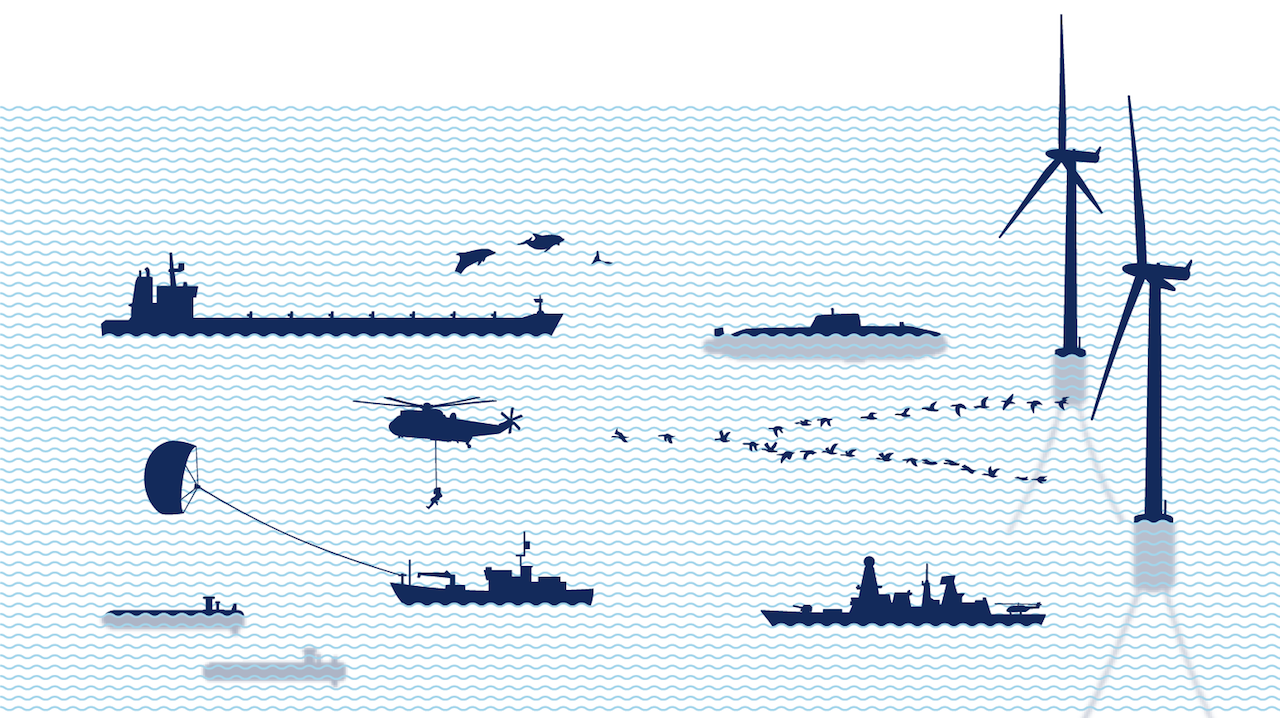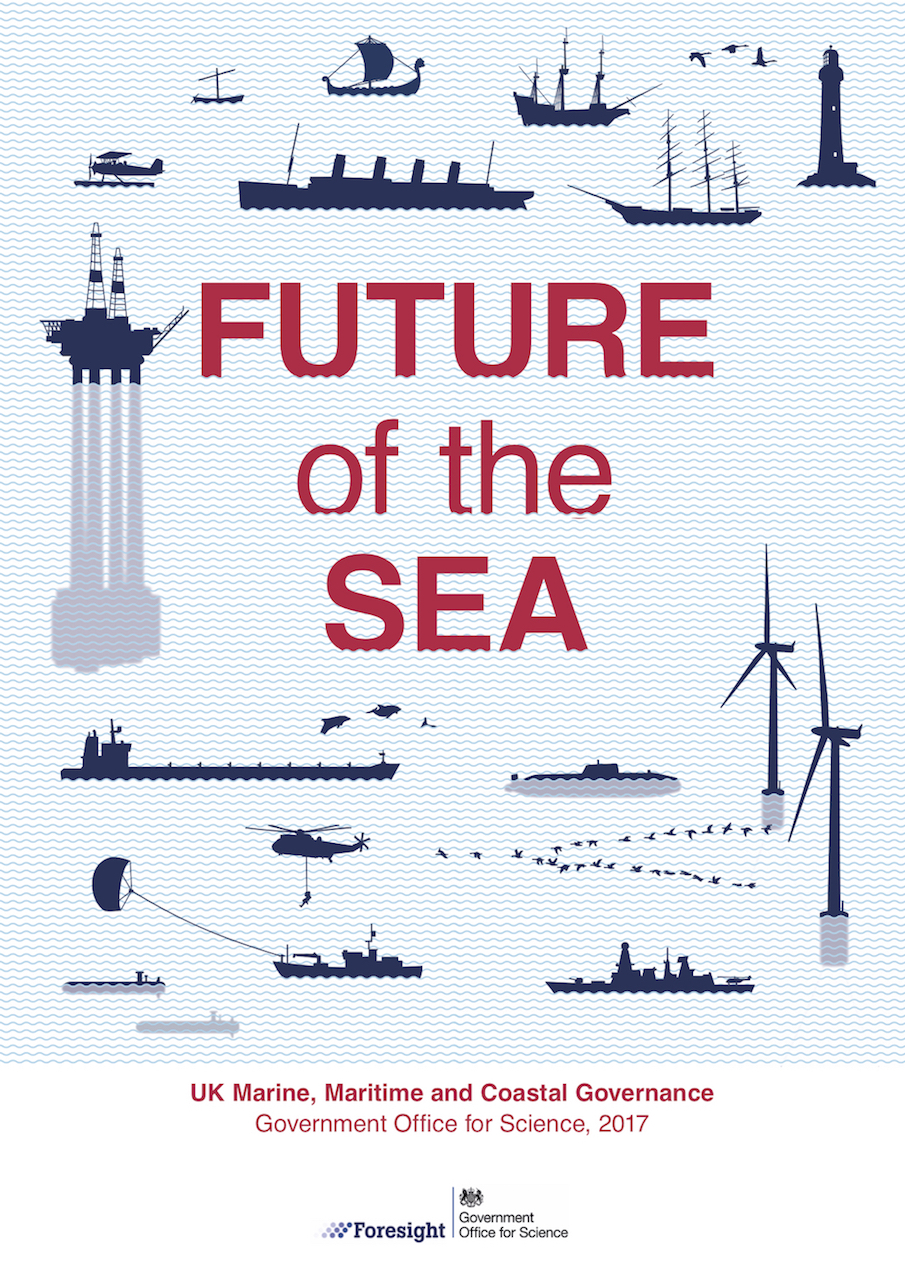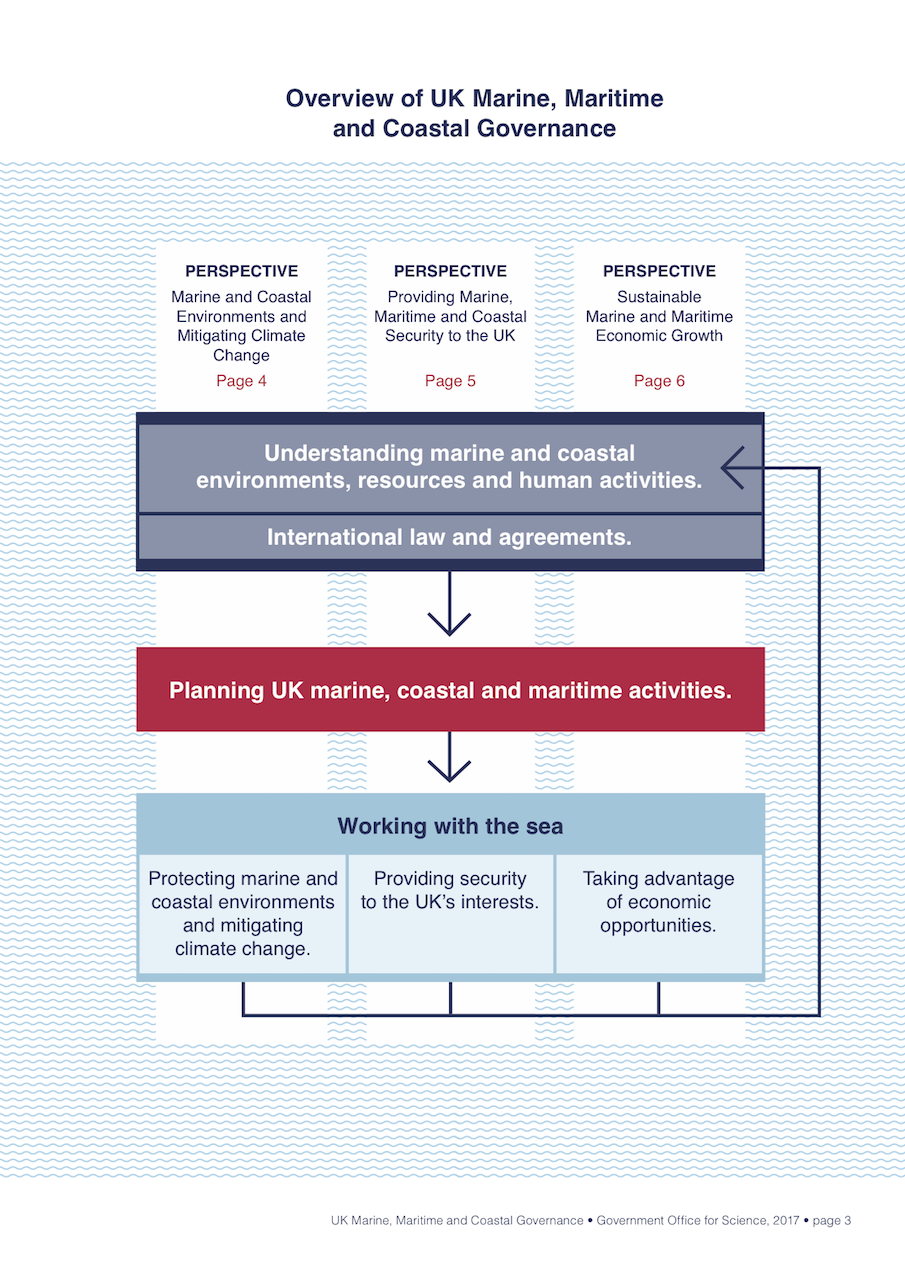
Working with the UK Government Office for Science to research and visualise UK Sea Governance.
Connecting scientific evidence to policy-making is a non-trivial process. Evidence can be conflicting, incomplete, or inconclusive, obscuring the ability of policy-makers to apply this information. Likewise, policy-makers may not be receptive to information, or can be constrained in the choices that they are able to make. More than this, scientific evidence almost never compels any particular policy direction, rather providing insights into potential benefits, costs and risks of action. This difficult but important relationship is well recognised by UK Government, with many organisations in place to help facilitate conversation between researchers and policymakers.
One of these organisations is the Government Office for Science (GO-Science), who make sure that UK government departments have access to scientific advice and evidence to inform their policy-making. An important part of this is the Foresight programme, which looks forwards to identify opportunities and challenges that might affect the UK in the near future. Every year GO-Science chooses 2 or 3 different topics to investigate, producing a report and raising awareness of how government could use evidence to positively influence the UK.
One of Foresight’s most recent projects is ‘The Future of the Sea’, which is due to be published this year. The project is looking to understand the ways in which the UK interacts with the sea, how that might change in the future and how Government can act to sustainably support the people, organisations and industries involved.
Early in the project GO-Science approached us to understand if we could work with them to organise and rationalise their initial research, and to design a stimulus that visualises the responsibilities of different UK Government departments and agencies in relation to the Sea. The idea being that by synthesising and presenting research in an engaging and accessible way, interactions between foresight researchers and policy-makers would be more focused and fruitful, easing the relationship between policy and evidence.
How does UK Government interact with the sea?
Our starting point for this work was the initial research that GO-Science had done into the different interests that the UK has in the sea. This includes a diversity of concepts such as maintaining biodiversity and supporting coastal tourism, marine industries, port infrastructure, shipping, and the development of new technologies for ocean mapping. All of these related but distinct interests needed to be represented, with meaningful links being highlighted wherever possible. As important was finding a way to represent the responsibilities of different government departments and organisations.
Our goal was to produce something that would simplify the complexity of the interactions between people government, and marine, maritime and coastal activities without dumbing down or removing important detail. The aim was that this would facilitate conversations about how government is currently organised and how it could change, but also stand alone as a picture of UK sea governance.
Looking for an organising structure


Draft illustrations showing ideas for visualising links between concepts
We began by organising the interests into those that were more similar to one another or more different based upon different guiding principles. For example we experimented with grouping by the geographical location of the interests - in, across or by the sea. Another principle was the intended purpose of the interest such as extracting resources, or protecting biodiversity. We then drew and defined connections between groups, such as dependencies or beneficial relationships.
After a few iterations trialling out different organising principles, we decided with GO-Science to use a simple structure based around a flow of interests grouped into understanding, planning and working. Each group is dependent on the activities of the previous one.
-
Understanding — Interests with a purpose of monitoring and research on the sea, coastal and marine environments, climate or human activities related to the sea. These activities also include efforts to analyse this data.
-
Planning — Interests related to planning and regulating economic, environmental or security activities based upon the information gathered in ‘Understanding’.
-
Working — Diverse marine, maritime and coastal interests to sustainably benefit from the sea, and to protect the UK’s ability to continue to do this. The flow begins once more as there are efforts to monitor and understand the impacts of these activities.
This structure allowed the UK’s interests to be described as collectively working towards one of 3 high level goals: Marine and Coastal Environments and Mitigating Climate Change; Providing Marine, Maritime and Coastal Security to the UK; and Sustainable Marine and Maritime Economic Growth. For each of these goals we produced a visualisation showing the major industries, regulations, departments and people involved.
We then tested out the diagrams with representatives from different government departments. Based upon their feedback we iterated and improved the designs. Most significantly we made sure that it was possible to use the three diagrams together to show a whole picture of UK sea governance.
Managing complexity


Cover and overarching structure from our Future of the Sea report
As our first experience designing a tool to facilitate science policy discussions, this project proved to be a really useful learning experience for us.
Government is an enormous and complex organisation, with numerous ways of dealing with cross departmental topics such as the sea. To have a full understanding of this requires significant effort. We found that attempting to communicate this visually can serve a useful purpose in helping people to access the topic, and to discuss ways in which governance can be proactive to future challenges and opportunities.
One of the biggest challenges was in pitching the level of detail correctly. Different departments have different levels of interaction with the sea, as well as different understandings of whose responsibility certain activities are. It is likely near impossible for a representation to be perfect from all perspectives.
We found that it is precisely this difference of opinion that this type of work can help to bring out in the open. The process of presenting people with a picture of what we thought they and others do resulted interesting discussions around governments role in the sea. The diagrams give people a chance to react to something, focusing discussion and highlighting opportunities for relationships between departments.

